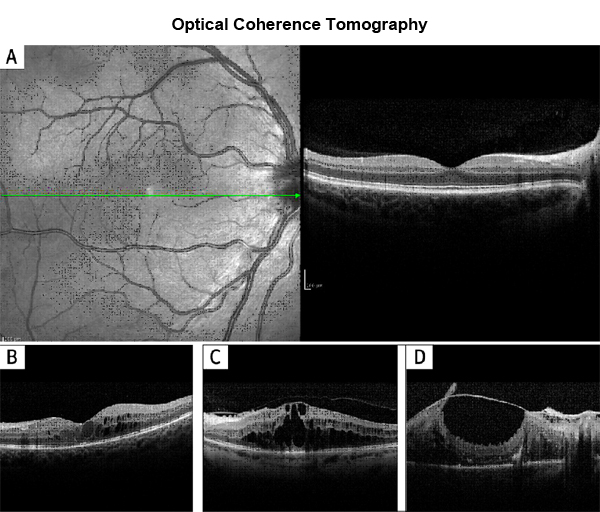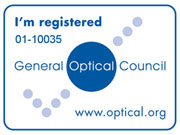Macular Degeneration Screening
Macular Disease (AMD)
The macula is part of the retina at the back of the eye. It is only the size of agrain of rice but is responsible for our central vision, most of our colour vision
and the fine detail of what we see.
When macular disease appears in later life it is called age-related macular degeneration (AMD). It usually affects people over 60 but can happen earlier.
Age-related macular degeneration is the most common cause of sight loss in the developed world. In the UK over 500,000 people are affected. About half are registered as visually impaired.
Symptoms of macular disease include reduction or distortion in central vision. This can be gradual or sudden and an eye examination is advised when it is noticed.
Traditional examination of the macular includes ophthalmoscopy (looking inside of the eye with a light) and looking at an Amsler Chart (grid pattern of lines) to document the loss or distortion.
Enhanced Macular Examination
With increases in technology it is now possible to visualise the back of the eye in 3 D.
using an OCT (Ocular Coherence Tomographer). This allows the optometrist to investigate the layers of the retina within the macular area and so more accurately diagnose the macular condition and schedule treatment, if needed.
OCT (Ocular Coherence Tomographer) examination involves a form of ultrasound scanning, using light instead of sound waves, to build up a 3 D picture of the structures of the eye. There are no risks involved to vision and the examination is non invasive.

The Enhanced Macular Examination can be undertaken at the time of your standard eye examination or on a separate scheduled appointment. Please see our fees sheet for the costs involved and remember an Enhanced Macular Examination can be included within our Eyeplan scheme if you would prefer.
Tel: 01375 373000
Services





Copyright © EUIN STEELE
Design by Computer Confidence


